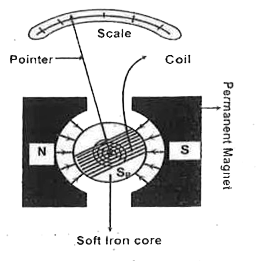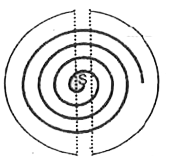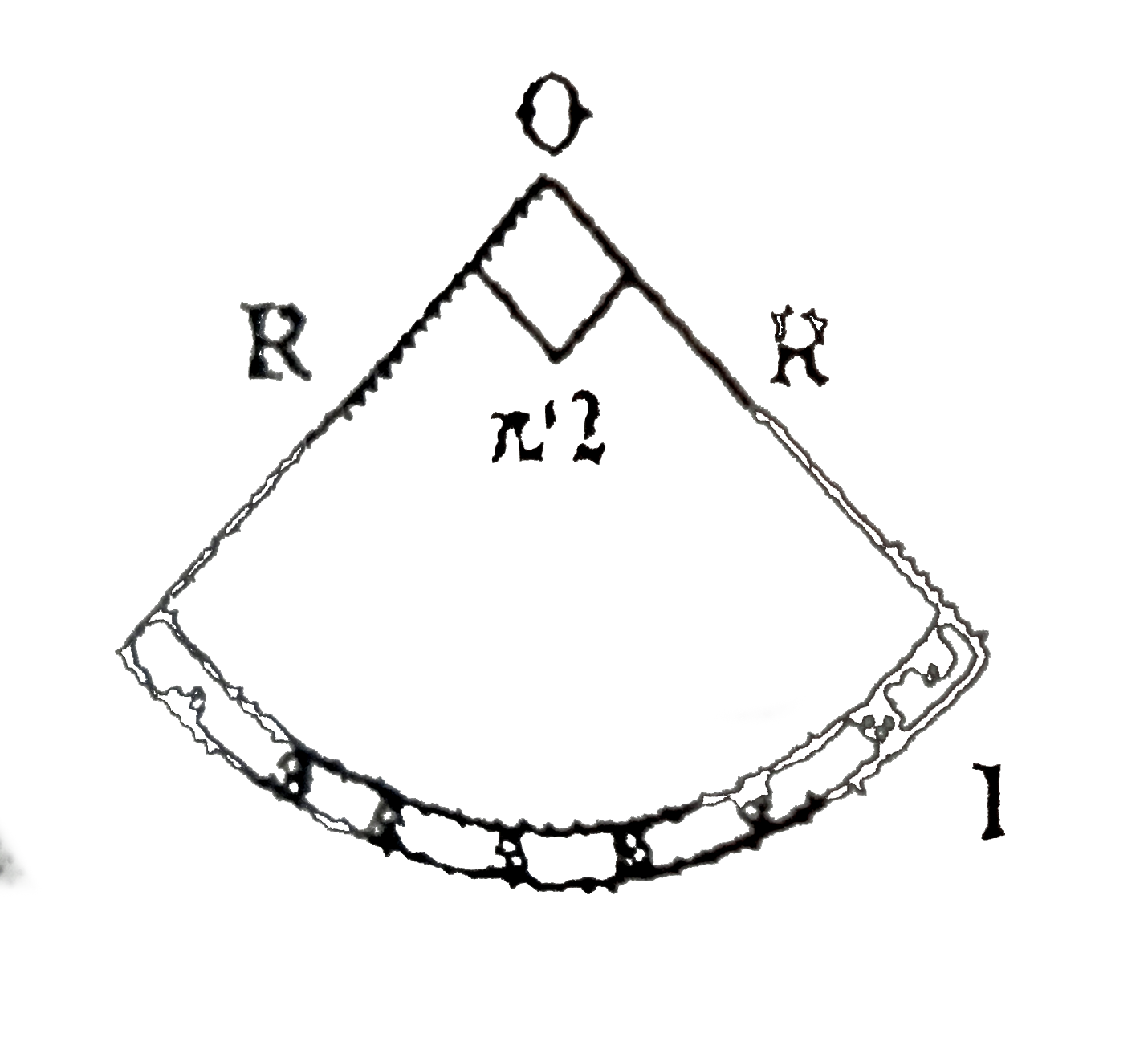A hollow tube is carrying an electric current along its length distributed uniformly over its surface. The magnetic field
incerease linearly from the axis to the surface
is constant inside the tube
is zero at the axis
is zero just outside the tube
The correct Answer is:B, C
Step by step video, text & image solution for A hollow tube is carrying an electric current along its length distributed uniformly over its surface. The magnetic field by Physics experts to help you in doubts & scoring excellent marks in Class 12 exams.
Updated on:21/07/2023Topper's Solved these Questions
- MAGNETICBook:FIITJEEChapter:MAGNETICExercise:Comprehension -1
Explore 3 Videos
- MAGNETICBook:FIITJEEChapter:MAGNETICExercise:Comprehension -2
Explore 3 Videos
- MAGNETICBook:FIITJEEChapter:MAGNETICExercise:Assignment Problems (Assertion Reasoning Type)
Explore 2 Videos
- LAWS OF MOTIONBook:FIITJEEChapter:LAWS OF MOTIONExercise:COMPREHENSION-III
Explore 2 Videos
- MAGNETISMBook:FIITJEEChapter:MAGNETISMExercise:Example
Explore 12 Videos
Similar Questions
Analog voltmeters and ammeters work b measuring the torque exerted by a megentic field on a current carrying coil. The reading is displayed by means of the deflection of a pointer over a scale. The adjacent figure shows the essentials of a galvanometer, on which both analog ammters and analog voltmeters are based. Assume that the coil is 2.1 cm high, 1.2 cm wide has 250 turns and is mounted so that it can rotate about an axis (into the page) in a uniform radial magnetic field with B = 0.23 T. for any orientation of the coil, the net magnetic field through the coil is perpendicular to the normal vector of the coil (and thus parallel to the plane of coil) A spring SP provides a counter torque that balance the magnetic torque so that a given steady current I in the coil results in a steady angular diflection ϕ. The greater the current is greater the deflection is and thus greater the torque required of the spring is A current of 100 μA produces an angular deflection of 28∘.

What must be the torional conctant k of the spring ?
View SolutionTo know the surface of matter on smallest scale we allow an energetic charged particle to slam into a solid target or allow two energetic charged particle to collide head on. We use cyclotrons to give very high kinetic energy to the charged particles, we arrange for the proton to circulate in a magnetic field and give it a modest electrical kick once per revolution. Two hollow D shaped objects, called does are part of an electrical oscillator that alternates the electric potential difference across the gap between the does back ad forth. the does are immersed in a magnetic field whose direction is out of the plane of page and that is set up by a large electromagnet, suppose a proton injected by a source S at the centre of the cyclotron, initially moves towards a negatively charged de. It will accelerate toward this doe and enter it. Once inside, it is shielded from electric fields by the copper walls of the dee: that is the electric field does not enter the dee. The magnetic field however is not screened by the copper dee. So, the proton moves in a circular path whose radius, which depends on speed is given by r=mvqB
The key to the operation of cyclotron is that the frequency f at which the proton circulates in the field and thaat does not depend on its speed must be equal to the fixed frequency Foce of the electrical oscillator. The resonance condition is given by
qB=2πmFoce

If a proton circulates 200 times in a magnetic field of 1.5 T and receives an energy boost of 100 keV every time it completes an orbit it will end up with a kinetic energy of
View SolutionStatement-1: The magnetic field at the centre of a circular loop carrying current zero
Statement -2: Due to symmetry the field produced by the the field produced by the diametrically opposite points add to each other.
View SolutionGenerally, we consider that during slowing of a moving automobile, its retardation is constant, but in practice this is seldom the case. Under many circumstances, especially at high speed, we usually apply the brakes slowly at first and then more strongly as the car slows. The braking force therefore depends on the time during the interval over which the car is slowing and acceleration changes with time.
ax(t)=vA−vxdt=Fx(t)m
∫vxv0xdVx=∫10Fx(t)mdt
∴Vx=V0x+1m∫10Fx(t)dt
x(t)=x0+∫10Vx(t)dt
An example for the same is discussed here.
A car of mass m = 1000 kg is moving with 25 m/s. The driver begins to apply the brakes so that the magnitude of the braking force increases linearly with time at a rate of 2000 N/s.
Read the above passage carefully and answer the following questions.
Find the velocity of the car at t = 10 sec.
View SolutionA current I flows in a long straight wire (into the plane of the paper) with cross-section having the from of a circular are of radius R a shown in the figure. Find the magnetic induction at the point O.

View SolutionA long, straight wire of radius R carries a current distributed uniformly over its cross section. The magnitude of the magnetic field is
View SolutionA hollow tube is carrying an electric current along its length distributed uniformly over its surface. The magnetic field
View SolutionA thin but long, hollow, cylindrical tube of radius r carries a current i along its length. Find the magnitude of the magnetic field at a distance r/2 from the surface (a) inside the tube (b) outside the tube.
View SolutionA long, cylindrical tube of inner and outer radii a and b carries a current i distributed uniformly over its cross section. Find the magnitude of the magnetic field at a point (a) just inside the tube (b) just outside the tube.
View SolutionA large metal sheet carries an electric current along its surface. Current per unit length is lambda . Magnetic field near the metal sheet is.
View SolutionIf there is one hollow metallic tube which carries current uniformly distributed over its surface, which of the statements is correct?
View Solutionएक खोखली ट्यूब में इसकी लम्बाई के अनुदिश धारा बह रही है जो इसकी सतह पर एकसमान रूप से वितरित है। चुम्बकीय क्षेत्र
View SolutionA long, straight wire of radius R carries a current distributed uniformly over its cross section. The magnitude of the magnetic field is
View SolutionA hollow tube is carrying an electric current along its length distributed uniformly over its surface. The magnetic field
View SolutionA thin but long, hollow, cylindrical tube of radius r carries a current i along its length. Find the magnitude of the magnetic field at a distance r/2 from the surface (a) inside the tube (b) outside the tube.
View SolutionA long, cylindrical tube of inner and outer radii a and b carries a current i distributed uniformly over its cross section. Find the magnitude of the magnetic field at a point (a) just inside the tube (b) just outside the tube.
View Solution
